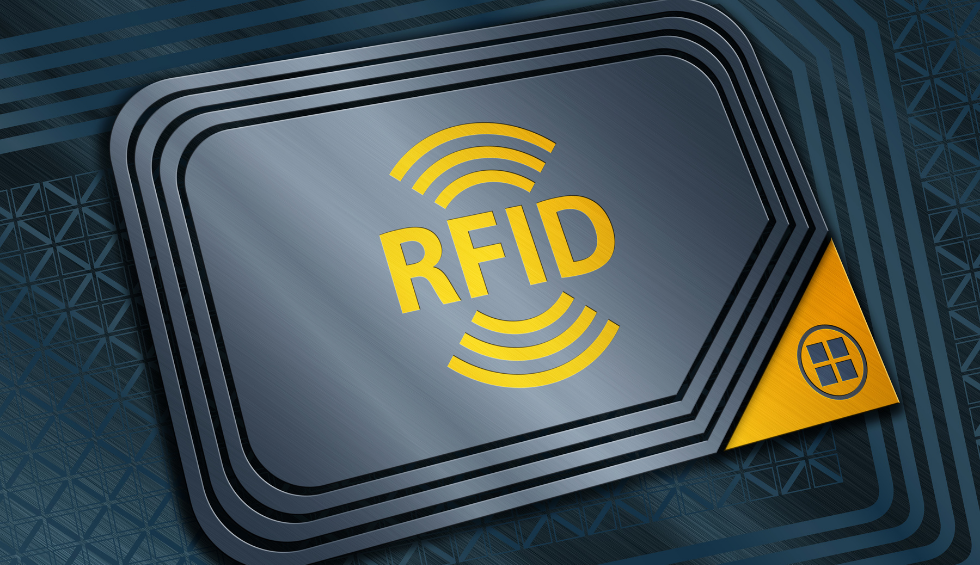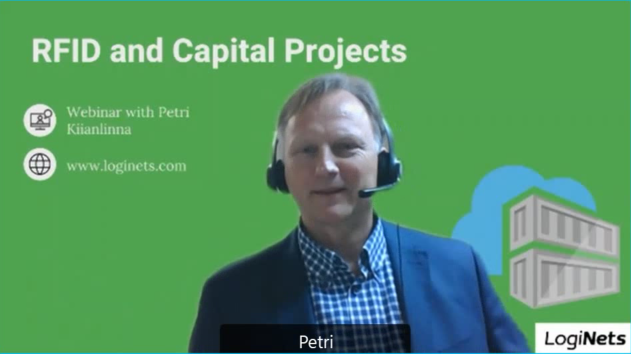“How can we optimize materials tracking and material deliveries in capital projects?”- this question has been asked by organizations, who have been project owners in capital projects, for the better part of 30 years. In 2020, most business processes and operations are digitalized, automated and optimized through AI. Still, when it comes to managing material delivery information in capital projects, data on materials, packages, containers and delivery timelines if often sent via Excels and emails between individual people in the entire project network. All project business organizations recognize the need for more transparent material delivery information exchange, but not all of them know where to look for it. Tracking materials in capital projects using RFID tags is one of the digital technologies discussed in project businesses.
I interviewed the founder of LogiNets, Petri Kiianlinna, who has been a part of these discussions for over two decades, to find out whether RFID tagging is an efficient method for tracking material deliveries and capital heavy construction projects. Petri is an engineer, who worked for Metso Corporation for 13 years in global capital construction projects and he was also the leader of the Heavy Industry Intelligence Project in the beginning of the 2000’s. The HIIPS project was formed with leading heavy industry organizations in Finland to develop materials logistics processes using wireless identification methods. You can find a recording of the interview here.
What should organizations consider in terms of their internal processes before beginning to track materials in capital projects using RFID- tags?
Organizations should begin these discussions by defining the goal for using RFID-tagging and clearly identifying the needs that RFID-tagging is aiming to solve. As a minimum, the following elements should be defined:
- Business processes where the RFID tags would be used. For example, RFID-tags can be used in logistics, site warehouse management or assembly monitoring, product life time data management or product service activities (repairs, maintenance etc).
- What is the desired business benefit of the tracking data? Ie. does the organization want transparent material logistic flows during the construction phase or efficient assembly monitoring?
- Levels, where the RFID tags would be used. RFID-tags can be used on products or logistic units (in capital projects these are packages / containers / shipments).
- Scope of the tagging. RFID- tags can be utilized across all materials and equipments in the project or you may decide to limit tagging to specific components, for example instrumentation and automation components, mechanical installation or civil engineering.
- Available budget and desired ROI from tagging efforts.
What should organizations consider in terms of the project business environment before implementing RFID- tagging of equipments?
The nature of the project is as important to take into account as business process. Issues to be considered include:
- Size of the project.
- How procurement is organised- should the same system be used for procurement or does the chosen solution have the capability to be integrated with the existing ERP and SAP.
- Are the suppliers local or located all over the world?
- What are the most critical product groups for the project to be traced?
Is the degree of maturity in RFID technologies high enough to be used to track materials in global capital projects?
In general, the maturity of RFID technology is very good. RFID technologies and tagging has been in production use for over 40 years in various industries. In regards to standardization of RFID tags, low frequency tags are typically used for product level identification and high frequency tags are used in logistics. Global standards are in place for both of these tag types.
One of the major difficulties of tracking materials in capital projects using RFID tags is the presence of metal at all tracking levels. Containers and trucks where goods are sent have high amounts of metal and many of the equipments include metal components. There are several RFID solutions available for metal environments, but these tags and readers are expensive, and the solutions are not scalable for the project business environment.
It’s important to remember that RFID is not the only wireless identification technology, that had been developed and can be utilized. QR codes and bar codes are also reliable alternatives for item identification. For example, material suppliers can print weather resistant shipping labels and documents, which have QR codes imbedded. QR codes can be scanned by logistics service providers and at the project site with mobile phones. This option is much more cost friendly because no investments have to be made to reader devices or RFID tags and shipping documents can be printed at the suppliers premises with their existing printers.
RFID-tagging of equipment’s on its own without an information exchange platform will not give the project owners the needed information for materials tracking. What processes and systems need to be in place in order to efficiently gather and exchange data from RFID-tagging of products?
Successful implementation of RFID tags in capital projects requires software solutions that are suitable and scalable for the project business. The software should have proven track records, when millions of dollars of material flows are being recorded and tracked. The solution should be easy to use for the project owners and suppliers and it should support the operations of all the different businesses involved. The deployment of the chosen solution should be easy, because suppliers globally across different businesses are expected to efficiently use the software. The software needs to have the capability to deal with vast data amounts that are typically associated with capital projects- you may have thousands of containers, hundreds and thousands of packages and millions of different equipments.
Is it efficient to track materials in capital projects using RFID- tags?
Based on my 20 years of experience, I wouldn’t recommend using RFID- tags to track materials in capital projects. In the project business, there is extensive presence of metal at all tracking levels and RFID tags don’t perform well in this environment. The material supplier’s internal production and packing processes also don’t support tagging of the products. It is also a challenge to send the correct amounts to suppliers globally in a timely manner, because suppliers have different delivery and shipment schedules. Finally, RFID tags and their readers require expensive investments.
What is an efficient way of tracking materials in capital projects?
In my experience, an efficient way of tracking materials is implementing QR Codes in shipping documents and product labels, which the suppliers can print with their own printers.
As a sample, when things are done right, with a single QR code scan from a container specification with a mobile phone, 60 control valves can be unloaded to the project site with GPS-coordinates.
Efficient tracking of materials in global projects has been on agenda of project businesses for a long time. The global network, lack of known best practices and temporary timeframe of project lifecycle can make it difficult to implement new tracking methods. Businesses should start with crystal clear objectives and desired scope in mind, when searching for methods to improve material tracking systems. Cost-effective solutions with proven track records should be selected based on the needs of the business and project.
You can also listen to the interview on “The Heavy Industry Sound” podcast
Want to discuss this topic further?

Or schedule a meeting via this link



